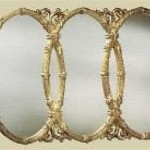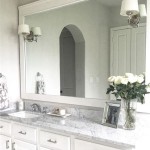Small Convex Mirror: An Overview of Applications, Advantages, and Considerations
The small convex mirror, characterized by its curved reflective surface that bulges outward, is a seemingly simple optical device with a surprisingly broad range of applications. Its fundamental property of providing a wide-angle view within a compact form factor makes it invaluable in situations where maximizing situational awareness is crucial. This article will delve into the principles behind convex mirrors, explore their diverse uses across various industries, outline the advantages they offer, and consider the key factors that should be evaluated when selecting and implementing them.
The underlying principle of a convex mirror hinges on the laws of reflection and the geometry of its curved surface. Light rays striking the mirror are reflected outwards, diverging from each other. This divergence effectively expands the field of view that is reflected back to the observer. The resultant image formed by a convex mirror is always virtual, upright, and smaller than the actual object. Because the light rays do not actually converge to form the image, it appears to be located behind the mirror's surface. The extent of the field of view and the degree of image minification depend on the radius of curvature of the mirror; a smaller radius of curvature results in a wider field of view and greater minification.
The magnification produced by a convex mirror is always less than one. This inherent characteristic contributes to the wide-angle view, allowing the observer to see a larger area than would be possible with a flat mirror of the same size. While the image appears smaller and further away, it is crucial for observing overall activity and potential hazards, even at a distance. This characteristic is particularly valuable in safety and security applications.
Enhanced Security and Surveillance
One of the most prominent applications of small convex mirrors is in security and surveillance. They are widely used in retail stores to deter shoplifting and improve overall security. Placed strategically in blind spots, corners, and at the end of aisles, these mirrors allow store employees to monitor a wider area and identify potential suspicious behavior. The wide-angle view offered by the convex mirror significantly reduces the risk of undetected theft, as it allows employees to observe movements and activities that would otherwise be obscured by shelving or other obstructions.
Furthermore, convex mirrors are often employed in parking garages and warehouses to enhance safety and security. In parking garages, they help drivers navigate tight corners and avoid collisions with other vehicles or pedestrians. The increased visibility reduces the risk of accidents, particularly in areas with limited sight lines. In warehouses, convex mirrors assist forklift operators in maneuvering safely through congested areas, preventing collisions with workers or equipment. Their presence contributes to a safer working environment and reduces the likelihood of workplace injuries.
Beyond retail and industrial settings, convex mirrors also find application in residential security. Small convex mirrors can be installed near doorways or driveways to provide homeowners with a wider view of their surroundings. This allows them to see approaching visitors or potential intruders without having to open the door, enhancing their personal safety and security.
Improved Road Safety
Small convex mirrors play a vital role in improving road safety, particularly in enhancing visibility in blind spots and areas with limited sight lines. They are commonly used as supplementary mirrors on vehicles, providing drivers with a wider field of view and reducing the risk of accidents. These mirrors can be attached to side mirrors, allowing drivers to see vehicles in their blind spots when changing lanes or merging onto highways. This is particularly useful for larger vehicles, such as trucks and buses, which have larger blind spots than passenger cars.
Convex mirrors are also frequently installed at intersections and sharp curves to improve visibility and prevent collisions. At intersections with obstructed views, these mirrors allow drivers to see approaching traffic from different directions, providing them with more time to react and avoid accidents. Similarly, at sharp curves, convex mirrors help drivers see oncoming vehicles that might otherwise be hidden by the terrain, reducing the risk of head-on collisions. Their presence at these critical locations significantly enhances road safety and reduces the number of accidents.
In addition to their use on vehicles and at intersections, convex mirrors are also employed in driveway exits to improve visibility and prevent accidents. These mirrors allow drivers to see approaching traffic before pulling out onto the road, reducing the risk of collisions with other vehicles or pedestrians. This is particularly useful for driveways that are located on busy streets or have limited visibility due to landscaping or other obstructions.
Enhanced Monitoring and Observation
Outside of security and transportation, small convex mirrors are valuable for monitoring and observation in a range of specialized applications. In medical settings, they can be used to observe patients in hospital rooms, offering nurses and caregivers a wider view of the patient's condition without needing to constantly enter the room. This allows for more efficient patient monitoring and reduces the risk of disturbing patients unnecessarily.
In industrial processes, convex mirrors can be used to monitor production lines and equipment. Their wide-angle view allows supervisors to observe the entire process from a single location, identifying potential problems or inefficiencies. This leads to improved productivity and reduces the risk of equipment malfunctions or production delays.
Small convex mirrors are also used in scientific and research applications, such as in telescopes and microscopes. They can be used to collect and focus light, enhancing the clarity and brightness of images. Their compact size and wide-angle view make them particularly useful in these applications, allowing for the observation of small or distant objects with greater detail.
The selection of an appropriate small convex mirror is not arbitrary and must consider several pertinent factors. The size of the mirror must be sufficient to offer the desired field of view for the specific application. A larger mirror provides a wider field of view, but it may also be more cumbersome and less discreet. The curvature of the mirror, determined by its radius of curvature, needs to be considered. A smaller radius of curvature results in a wider field of view but also greater image distortion. The material of the mirror, typically glass or acrylic, should be chosen based on durability, resistance to scratches, and environmental conditions. Glass offers superior optical quality and scratch resistance, while acrylic is lighter and more resistant to impact.
The mounting mechanism is another crucial consideration. The mirror must be securely mounted to ensure stability and prevent it from falling or being easily dislodged. The mounting mechanism should also allow for adjustment of the mirror's angle to optimize the field of view. Finally, the surrounding environment must be considered. In harsh environments, such as those exposed to extreme temperatures or corrosive substances, a more durable and resistant mirror may be required.
Proper installation and maintenance of small convex mirrors are essential to ensure their effectiveness and longevity. Mirrors should be installed in locations that provide a clear and unobstructed view of the target area. They should be positioned at a height that is comfortable for observation and easily accessible for cleaning. Regular cleaning is essential to maintain the mirror's reflectivity and clarity. Mild soap and water are generally sufficient for cleaning, but abrasive cleaners should be avoided as they can scratch the surface.
Periodic inspection of the mirror and its mounting mechanism is also necessary to identify any signs of damage or wear. Damaged mirrors should be replaced promptly to ensure the continued effectiveness of the system. The mounting mechanism should be tightened regularly to prevent the mirror from becoming loose or falling. By following these simple maintenance procedures, the lifespan of small convex mirrors can be extended, ensuring their continued contribution to safety, security, and observation.

Small Convex Mirror Omelo Decorative Mirrors

Selection Of Small Convex Mirrors 25 00 To 45 Each Made Measure Looking Glass Bath

Antique Black Deep Framed Small Convex Mirror Rockett St George

45cm Indoor Small Pc Plastic Wide Angle Traffic Intersection Round Convex Mirrors For Parking Safety Whole China 60cm Outdoor Mirror Made In Com

Antique Black Thin Framed Small Convex Mirror Rockett St George

Truforce Small Convex Full Dome Mirror 360 Degree View 18 Inch Diameter Industrial And Personal Safety S From Safetydepot Com

Round Black Convex Mirror Small Cawarden Reclaim

Mirror Convex Wall For Small Areas In S Offices Works Outstanding Image Quality Recommended Barriers Direct

Convex Mirror Small

Small Size Safety Convex Mirror Used In Garage Or








